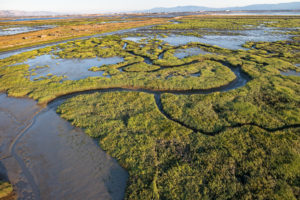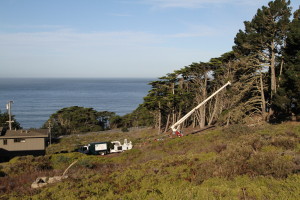Land management changes are also on the table for the Bolinas Lagoon in Marin County. Beginning in the 1880s, logging, road-building, and grazing around this 1,100-acre tidal estuary introduced tremendous amounts of silt to the lagoon’s mudflats and marshlands. The increased sedimentation has reduced the amount of water flowing in from the ocean, which has generated growing concern about the long-term vitality of this dynamic habitat. In 2003, after studying the lagoon, the Marin County Open Space District and the Army Corps of Engineers produced a much-criticized draft of an environmental impact analysis. Public disapproval of the draft, which favored environmentally disruptive dredging, encouraged the county to reformulate its findings. Philip Williams Associates, an independent consulting company, is currently producing 50-year environmental projections for the lagoon and submitting its findings for peer scientific review. The so-called Bolinas Lagoon Ecosystem Restoration Project team is now considering the potential impact of seismic events on lagoon depth as well as how a rise in sea level could affect estuary water levels. The review will be completed by November, with a few more opportunities for public input beforehand in May and June. At the meetings, consultants will summarize recent findings and invite public comments. “The findings will ultimately end up being based on the opinions voiced at these meetings,” says ecologist and project consultant Bill Carmen. For meeting dates, visit www.marinopenspace.org and click on “Bolinas Lagoon Ecosystem Restoration Project.”
Stewardship




